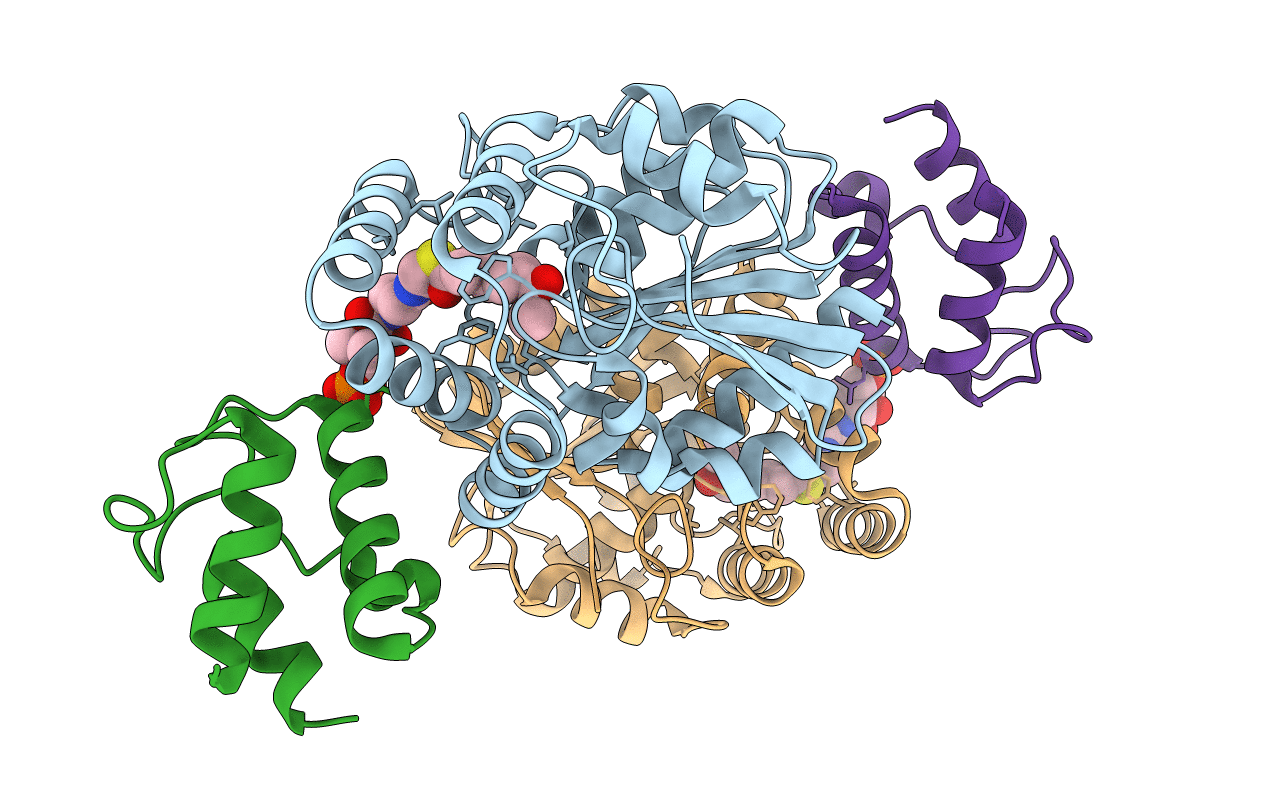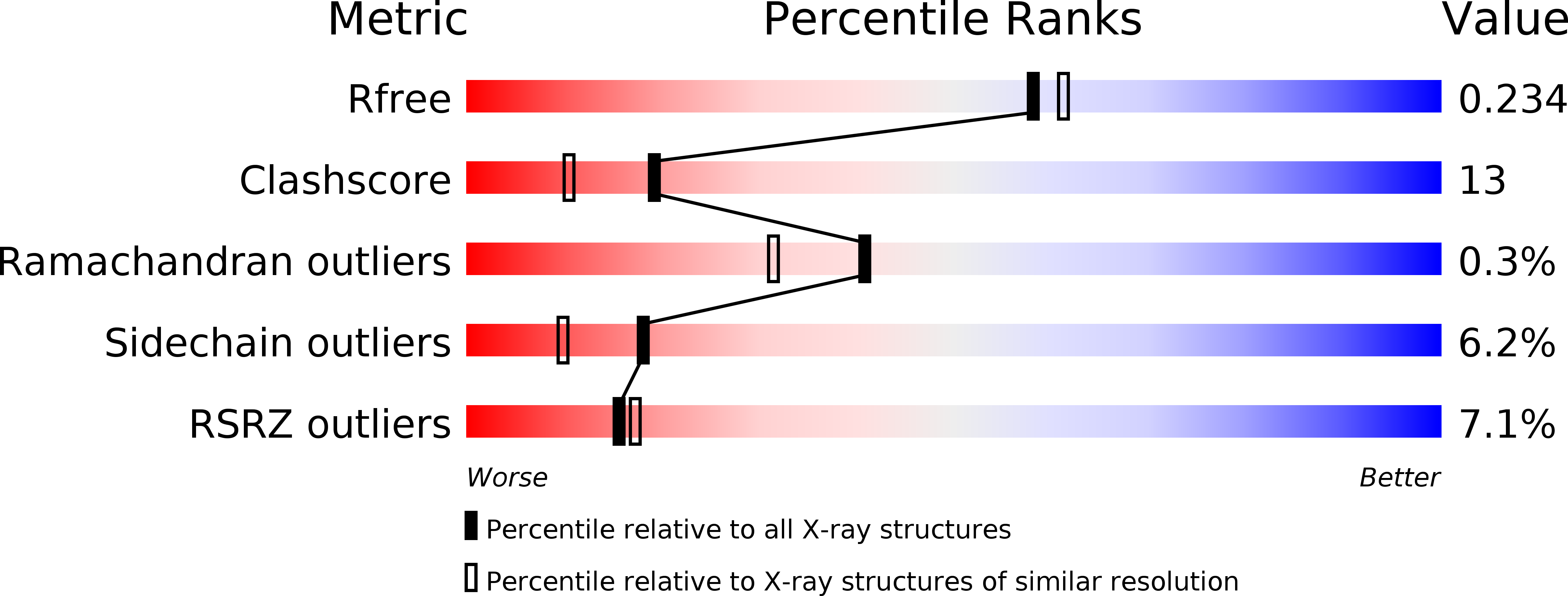
Deposition Date
2012-04-24
Release Date
2012-10-17
Last Version Date
2024-10-30
Entry Detail
PDB ID:
4ETW
Keywords:
Title:
Structure of the Enzyme-ACP Substrate Gatekeeper Complex Required for Biotin Synthesis
Biological Source:
Source Organism:
Shigella flexneri (Taxon ID: 623)
Shigella flexneri 5 (Taxon ID: 373384)
Shigella flexneri 5 (Taxon ID: 373384)
Method Details:
Experimental Method:
Resolution:
2.05 Å
R-Value Free:
0.23
R-Value Work:
0.19
R-Value Observed:
0.19
Space Group:
P 1


